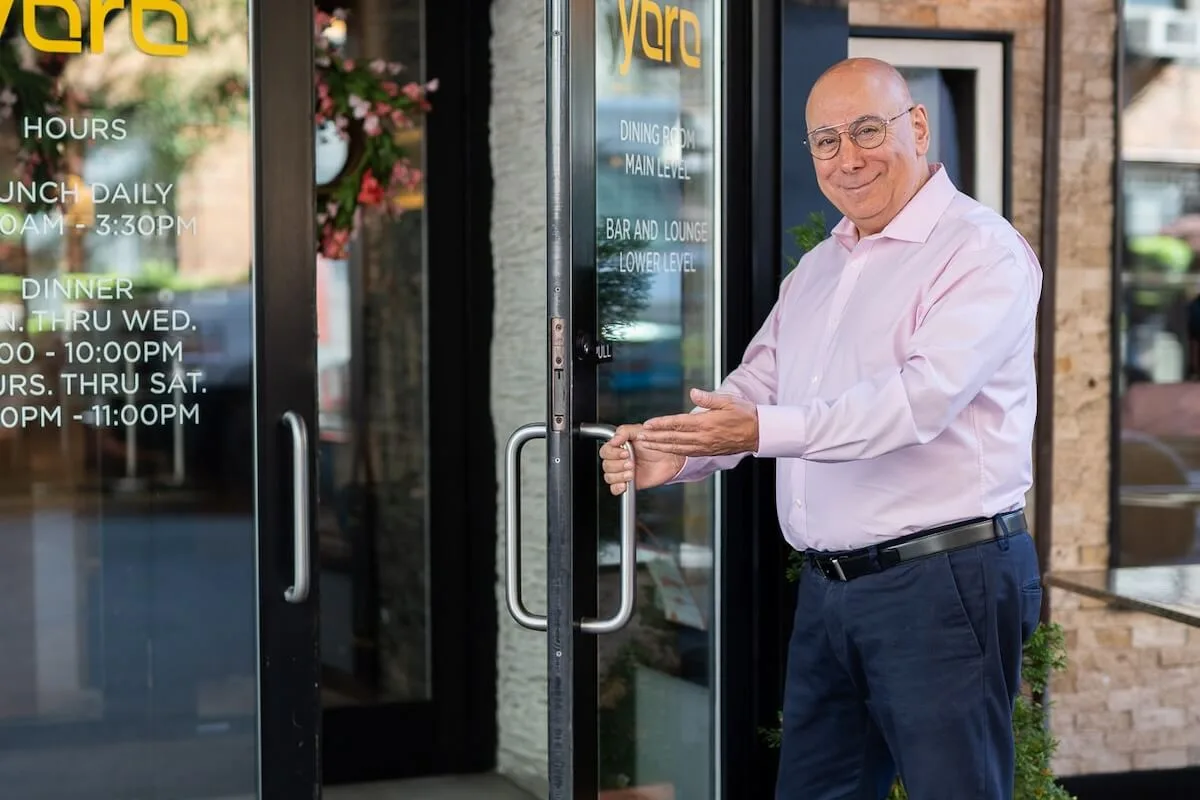Restaurant financing 101: Get the restaurant loan you need
Skip the article and turn takeaways into action by scheduling a call with our team.
Restaurants fail all the time, many of them within their first year. A prime reason many restaurants fail is a lack of funding—simply put, you need a significant amount of financial runway to be able to land successfully. The average restaurant costs hundreds of thousands of dollars to open, and more if you want to own the building. Luckily, restaurant financing exists, though it can be a complex web to navigate.
Think of all the things a restaurant needs capital for: kitchen equipment, inventory, staff training, marketing, and much more. New restaurants need funding, as do restaurants looking to expand or conduct renovations. So securing the right financing option can make or break a restaurant owner’s culinary dreams.
Restaurant business loans offer a lifeline for ambitious restaurateurs. But that lifeline can often feel more like a tightrope to walk.Just getting started brings up a host of questions. How much working capital do you need? Who’s the right lender? What’s an acceptable interest rate? How can you construct your business plan to get through a loan application process?
Let’s get started with some basics.
Understanding restaurant loan requirements

Understanding lenders’ requirements is key to succeeding in securing a loan. Lenders comb through large quantities of data from businesses they consider loaning to so they don’t get burned by bad loans. So what are they looking for? Some key factors include:
- Annual revenue
- Time in business
- Debt-to-income ratio
- Collateral assets
- Industry experience
- Credit score
Since there are many different types of loans, lenders will have different requirements. For example, some lenders ask for $200,000 in annual sales or around $17,000 per month to obtain a restaurant loan. A merchant cash advance is based on credit card sales and can require anywhere between $30,000 to $150,000 in annual credit card revenue. Restaurant equipment financing can be done starting around $50,000, since the equipment is its own collateral.
Typically, restaurants that have been around longer do better when it comes to financing eligibility. That’s because the business model has been proven and isn’t such an unknown risk. This depends of course on the type of restaurant: Franchises generally have an easier time than independently-owned small businesses because they’re a proven model.
Types of restaurant loans

Since restaurants have different business needs, there are different types of restaurant loans available for borrowers. Each funding option comes with different repayment terms.
Term loans
A term loan is typically what people think of when they consider a traditional bank loan. It involves considerable due diligence from the bank and can take time to process. However, the loan amount is usually a large lump sum upfront and intended to be paid back over a long period of time, anywhere from one year to a decade or more. Monthly payments often involve compounding interest rates—meaning restaurants need to pay their loan back on time.
Term loans are best sought out for very large expenses, like opening a new restaurant or new location, conducting major renovations, or purchasing property. Commercial real estate loans also fall into this broad category.
Capital loans
Capital loans are often intended as short-term loans to cover operational needs like daily expenses, cash flow fluctuations, or cyclical demands. Capital loans can vary widely based on what the business owner needs, and may or may not require collateral. Short-term loans often have quicker approval and funding, sometimes a matter of several business days, though they may come with higher interest rates and can lead to spiraling credit cycles if not managed carefully.
Equipment financing
Equipment financing is especially valuable for restaurants operating on a shoestring budget, since restaurant equipment like ovens and refrigerators can be costly. As these loans are for equipment, the interest payments are tax-deductible. They often require little to no collateral, as the equipment itself is the collateral.
As you may suspect, equipment loans are limited to equipment alone and can’t cover other expenses. As the loans come with interest rates, the equipment will cost more over the long term than if it had been purchased with cash. Additionally, new equipment depreciates over time, meaning the collateral loses its value.
Business line of credit
A business line of credit works like a personal credit card, but for a business instead of a person. Securing the line of credit with collateral can help keep interest rates down on money drawn from the credit. However, new businesses may need to go with unsecured credit, which can carry higher interest rates. As restaurant financing options go, it’s best to treat a line of credit like you would a credit card: Don’t let it get out of control and pay down the bill as quickly as possible.
Small Business Administration loan
A Small Business Administration (SBA) loan is an excellent financing option for entrepreneurs looking to start a new restaurant. The United States SBA is a government agency tasked with connecting small businesses with lenders while backing the loan to a certain degree.
The most common SBA loan is the SBA 7(a) loan, which covers most startup costs, including real estate, kitchen equipment, repairs, or purchasing an existing business.
Crowdfunding
Crowdfunding for restaurants has gained significant popularity over the last few years, essentially turning fans and enthusiasts into alternative lenders. You can consider crowdfunding a new type of loan option that’s still in its early stages as a loan option, but it’s one that can blow up and go viral if done right.
Crowdfunding sites that can be valuable for restaurants include:
Unlike other business financing, crowdfunding doesn’t rely on interest rates. Rather, it relies on promises from a business to its investors—like invitations to events and soft openings, guaranteed reservations, or permanent discounts and other bonuses. It also includes a processing fee for the crowdfunding platform, which can add up.
Crowdfunding relies more on social capital than on a business model and stats like small business loans do. If your name is well known in your area, it may be the way to go.
Getting a loan application ready

In order to speed up the approval process and improve your odds of sourcing restaurant funding, you’ll need to make sure your paperwork is in solid shape. This is especially true if you’re going for a traditional loan for major expenditures. So what kind of paperwork should you have ready?
Business plan
Almost every lender will want to see a solid business plan. A good business plan for a loan includes:
- An executive summary highlighting your concept and funding needs
- Market analysis showing your expertise in the restaurant industry
- A detailed operational strategy
- The qualifications and experience of your management team
- Marketing and growth strategies
A business plan needs to be thorough but doesn’t need to be a novel. Around 20–30 pages should do the trick.
Financial statements and analysis
Business owners of any variety need to keep their financial statements in order, whether when filing tax returns or requesting a loan. At minimum, a lender will want to see:
- Profit margins (the higher the better, though north of 10% is excellent)
- Revenue trends, with consistent growth patterns
- A positive cash flow ratio
- Enough working capital to last several months
Creating a digital folder to make these statements easy for your lender to evaluate can expedite the application process.
You’ll also want to develop projections and analysis for the future of your business. Calculating these numbers can be made easier with cutting edge point of sale software or front-of-house management tools like Yelp Guest Manager.
Some good projections and analytical points to include are:
- Historical sales patterns and seasonal fluctuations
- Market-based growth predictions
- Cost of goods sold (COGS) calculations
- Labor cost + operating cost (prime cost) estimates
Project these out monthly and even two to three years down the line if possible. If you’re running a new restaurant, you’ll want to have these numbers done based on assumptions.
Credit score
Naturally, lenders will check your credit score before loaning you money. If your business credit score isn’t yet well developed, securing a loan may come down to your personal relationships with banks. Some banks will loan to businesses with bad credit or no credit but interest rates will be notably higher, as lower interest rates are reserved for less risky loans.
In order to build your business credit, make sure your bill payments are on time, your credit utilization rate is low, and you keep regular credit lines open.
Hit the ground running

No matter what kind of restaurant financing you need, the goal is the same: Keep your restaurant moving onwards and upwards. With so many plates to spin, restaurateurs need all the support they can get. These days, that support often comes in the form of technology.
Systems that can automate a large number of previously tedious FOH operations are a blessing for busy restaurants. As one of those systems, Yelp Guest Manager also pairs with POS systems to keep all your finances in order, parse historical data, and help you make informed decisions.
Empowering yourself and your staff with the best in FOH management can improve all aspects of the business. Want to see what it’s all about? Reach out to us for a free demo and we’ll take you for a test drive. No application necessary.